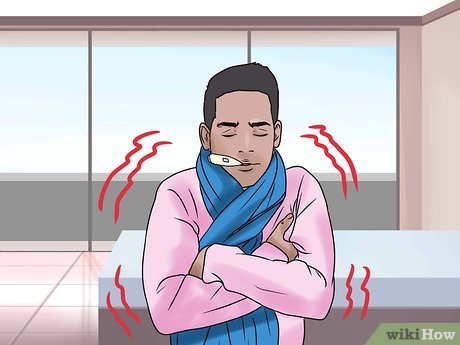
Hypothermia can be a potentially life threatening condition that requires immediate medical attention when left untreated. If left unattended: Remove all wet clothing, hats, gloves, footwear, and socks immediately.
Protect the person from cold, drafty air, wind, and possible further heat loss by wearing warm, dry clothing and warm blankets. Keep the clothing in a warm place, or in an area where it will not become too hot to protect the person from the sun's ultraviolet rays.
When the body's temperature has dropped below normal, it becomes unable to regulate itself. This occurs in both individuals and animals. It is usually caused by a deficiency of certain chemicals in the blood, but can also result from prolonged exposure to cold temperatures. A person's ability to regulate their body temperature varies from person to person. In hypothermia, the body fails to produce the necessary chemicals to help maintain normal body temperature.
During hypothermia, a person's body temperature may remain below normal for up to 24 hours. A person may remain in hypothermia for more than one day without realizing it. It is possible for someone to remain in hypothermia for up to two weeks. While it is possible to get treated for hypothermia, it may take days or weeks for the condition to become reversible.
There are many symptoms associated with this condition. Common symptoms include confusion, depression, nausea, irritability, dizziness, weakness, confusion, fatigue, sweating, hot flashes, and excessive sweating. Some symptoms may occur at different times during the course of the hypothermia episode. It is possible for a person to recover from hypothermia, but some symptoms can last for months.
To treat hypothermia, the most effective way is to provide the victim with as much heat and protection as possible
When the body is kept warm and protected, it can naturally lower its temperature, allowing the body to return to a healthy level of temperature.
Warm, water-filled warm baths are one of the most common treatments. The bath should be given every four hours while the individual is resting. Warm baths or showers may be administered each day while the person is resting. If the body is not bathed frequently, the temperature may remain elevated for longer periods of time.
If a person has trouble breathing due to hypothermia, they should receive warm fluids, such as boiled milk or hot tea, to replace the oxygen in the lungs. This should be given at least once every hour for two to three hours. Some medical professionals prefer to use anticholinergic drugs or vasoconstrictors to help lower the amount of oxygen in the body. These can be taken as tablets or injections.
Another treatment is pain medications. In addition to pain medications, anti-inflammatory medications should be used for the same effect. Pain medications should only be used as a last resort.
A cold compress is another treatment that is used for people who may have hypothermia
Cold compresses are placed on the extremities to relieve the stress from the low body temperature. This is most useful for adults who have been in hypothermia for an extended period of time. It is important for an adult patient to stay in a cool, dry environment, as dryness may cause further complications.
Cold compresses can also be used when an adult is experiencing symptoms associated with hypothermia, such as extreme fatigue and weakness. A warm shower can also be used to reduce the level of discomfort. Warm water can be used for this purpose.
The most common causes of hypothermia are dehydration, exposure to the cold, and illness or surgery. A cold compress will not work for all cases of hypothermia. Many doctors recommend that hypothermia patients be evaluated by a doctor to determine the severity of the condition and the best treatment.